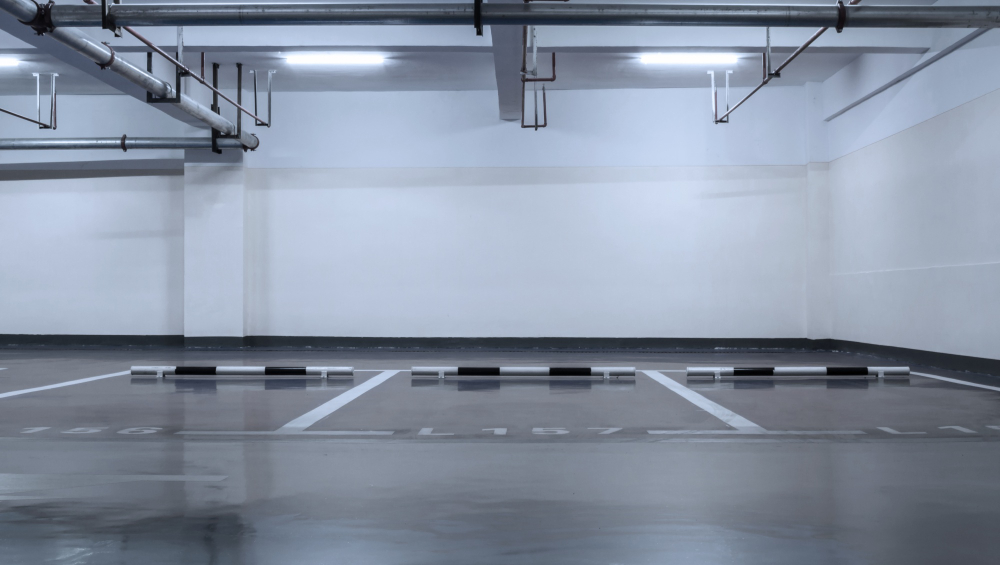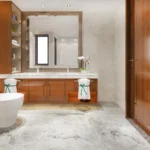Choosing the right flooring for your garage is crucial for both functionality and aesthetics. Your garage floor endures heavy wear and tear, exposure to chemicals, and temperature fluctuations, making it essential to select a durable and resilient flooring option.
Among the popular choices are polyaspartic and epoxy flooring. Each type offers unique benefits, but when it comes to deciding which one is best for your garage, epoxy flooring emerges as the superior choice.
Overview of Polyaspartic Flooring
Polyaspartic flooring is a type of coating known for its rapid curing time, which makes it highly convenient for those needing a quick turnaround. This flooring option offers high UV resistance, preventing discoloration and fading when exposed to sunlight over time.
The excellent adhesion properties of polyaspartic flooring ensure that it bonds well with concrete surfaces, providing a durable and seamless finish. In addition, polyaspartic flooring is praised for its superior chemical resistance. This is an ideal choice for areas exposed to various substances.
Overview of Epoxy Flooring
Epoxy flooring is another popular option, known for its durability and long-lasting properties. This type of flooring provides an attractive, high-gloss finish that can enhance the overall appearance of your commercial epoxy flooring.
Epoxy flooring is also a cost-effective solution that withstands heavy wear and tear, making it perfect for garage environments. With its strong resistance to physical impacts, epoxy flooring ensures that your garage floor remains in top condition for years, even under heavy use.
Moreover, epoxy flooring is highly versatile, offering various customization options, including the popular epoxy flake floor, which adds a decorative touch to the surface.
Comparison Criteria
To determine which flooring is better for your garage, we will compare polyaspartic and epoxy flooring based on the following criteria:
- Durability and Longevity
- Aesthetic Appeal
- Installation Process
- Cost Considerations
- Maintenance Requirements
Detailed Comparison
Durability and Longevity
Polyaspartic flooring is renowned for its resistance to chemicals and UV rays. These properties ensure that the floor maintains its vibrant appearance over time, even when exposed to harsh substances and sunlight.
The rapid curing time of polyaspartic flooring also contributes to its long-lasting nature, as it quickly forms a hard, protective layer.
On the other hand, epoxy flooring offers exceptional durability and resilience against physical impacts. This makes it ideal for garage environments where heavy tools, vehicles, and equipment are frequently moved around.
Epoxy flooring’s ability to withstand significant wear and tear without compromising its structural integrity makes it a preferred choice for both residential and commercial flooring applications.
Aesthetic Appeal
Polyaspartic flooring is available in a variety of finishes and designs, allowing homeowners to choose a look that best suits their taste and complements their garage’s aesthetic.
Its ability to maintain its color and finish over time, even under UV exposure. This ensures that the floor continues to look new and attractive.
In comparison, epoxy flooring is known for its high-gloss finish that enhances the overall appearance of any space. The customizable nature of epoxy flooring allows for a wide range of colors and patterns.
Installation Process
One of the standout features of polyaspartic flooring is its rapid curing time. This allows for quick installation and minimal downtime. The quick curing process ensures that the floor is ready to withstand heavy use within a short period.
Epoxy flooring, while not as fast-curing as polyaspartic, involves a straightforward application process that can be efficiently handled by a professional epoxy flooring installer in Naples.
Cost Considerations
When it comes to cost, polyaspartic flooring tends to be more expensive due to its advanced features and rapid curing time. The higher cost can be justified by its durability and performance.
Epoxy flooring, on the other hand, offers a cost-effective solution without compromising on quality and performance. Despite its affordability, epoxy flooring provides excellent durability and aesthetic appeal.
Maintenance Requirements
Maintaining polyaspartic flooring is relatively easy due to its chemical resistance. It requires minimal effort to keep clean, making it a practical choice for busy homeowners. Regular sweeping and occasional mopping are usually sufficient to maintain its appearance and functionality.
Similarly, epoxy flooring is low maintenance and easy to clean, making it an excellent choice for garage environments where spills and stains are common. Its smooth, non-porous surface prevents dirt and debris from penetrating, allowing for easy cleanup with simple household cleaning products.
Conclusion
While both polyaspartic and epoxy flooring offer unique benefits, epoxy flooring emerges as the better choice for garage applications. Its combination of durability, aesthetic appeal, and cost-effectiveness makes it the ideal option for homeowners looking to enhance their garage floors.
For the best results, consider hiring a professional epoxy flooring installer in Naples to ensure that your garage floor is installed perfectly and lasts for years to come.


